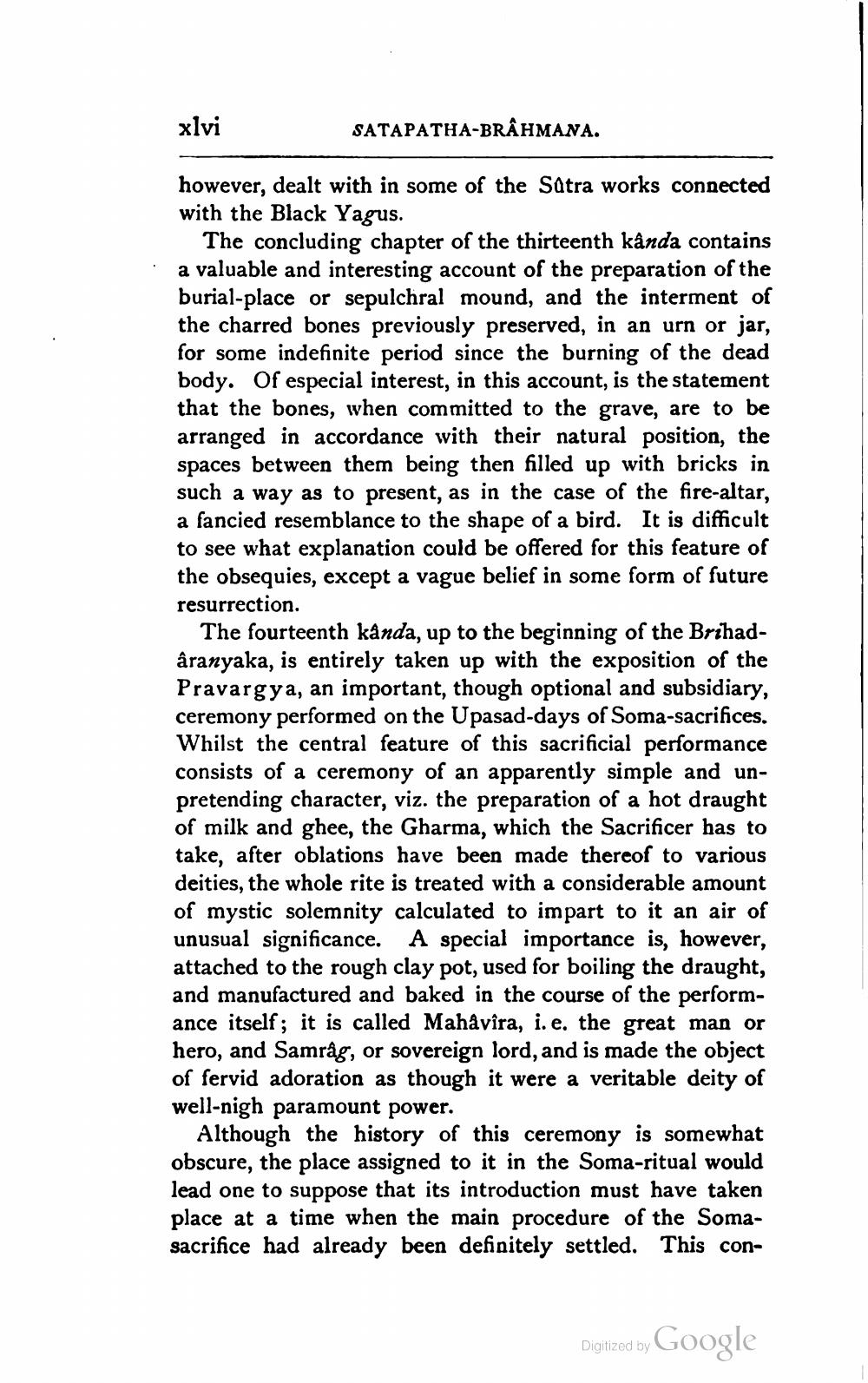________________
xlvi
SATAPATHA-BRAHMANA.
however, dealt with in some of the Satra works connected with the Black Yagus.
The concluding chapter of the thirteenth kânda contains a valuable and interesting account of the preparation of the burial-place or sepulchral mound, and the interment of the charred bones previously preserved, in an urn or jar, for some indefinite period since the burning of the dead body. Of especial interest, in this account, is the statement that the bones, when committed to the grave, are to be arranged in accordance with their natural position, the spaces between them being then filled up with bricks in such a way as to present, as in the case of the fire-altar, a fancied resemblance to the shape of a bird. It is difficult to see what explanation could be offered for this feature of the obsequies, except a vague belief in some form of future resurrection.
The fourteenth kända, up to the beginning of the Brihadâranyaka, is entirely taken up with the exposition of the Pravargya, an important, though optional and subsidiary, ceremony performed on the Upasad-days of Soma-sacrifices. Whilst the central feature of this sacrificial performance consists of a ceremony of an apparently simple and unpretending character, viz. the preparation of a hot draught of milk and ghee, the Gharma, which the Sacrificer has to take, after oblations have been made thereof to various deities, the whole rite is treated with a considerable amount of mystic solemnity calculated to impart to it an air of unusual significance. A special importance is, however, attached to the rough clay pot, used for boiling the draught, and manufactured and baked in the course of the performance itself; it is called Mahåvîra, i. e, the great man or hero, and Samråg, or sovereign lord, and is made the object of fervid adoration as though it were a veritable deity of well-nigh paramount power.
Although the history of this ceremony is somewhat obscure, the place assigned to it in the Soma-ritual would lead one to suppose that its introduction must have taken place at a time when the main procedure of the Somasacrifice had already been definitely settled. This con
Digitized by Google




